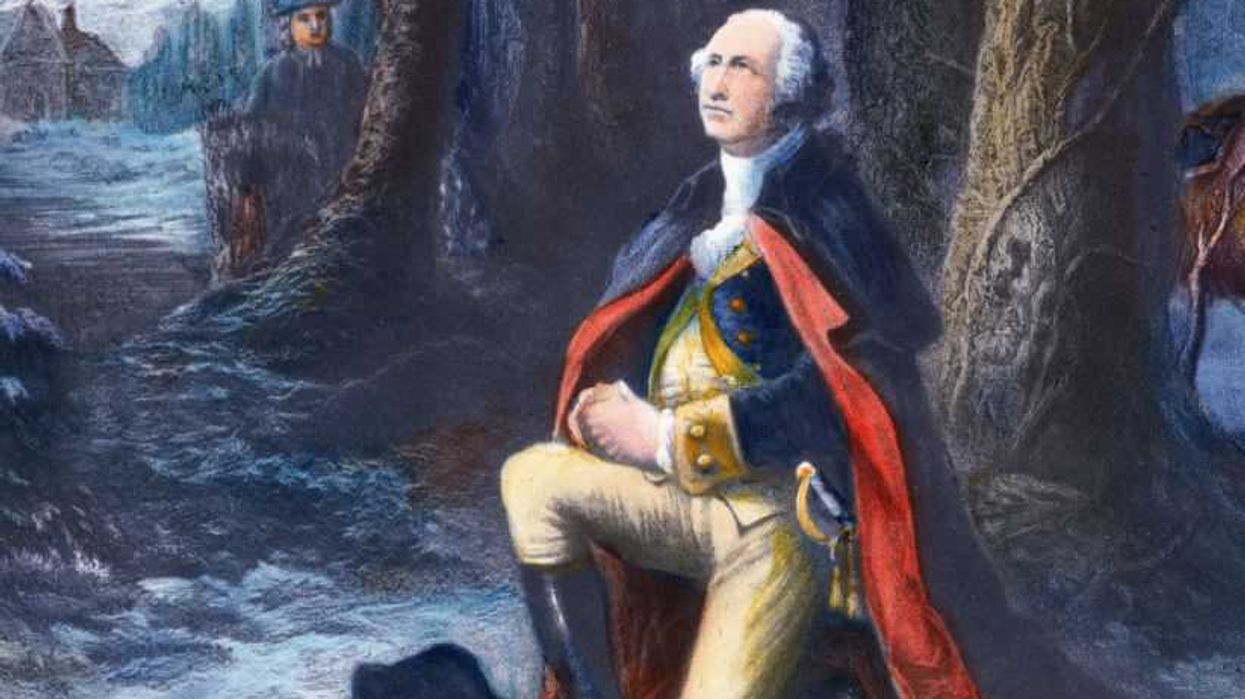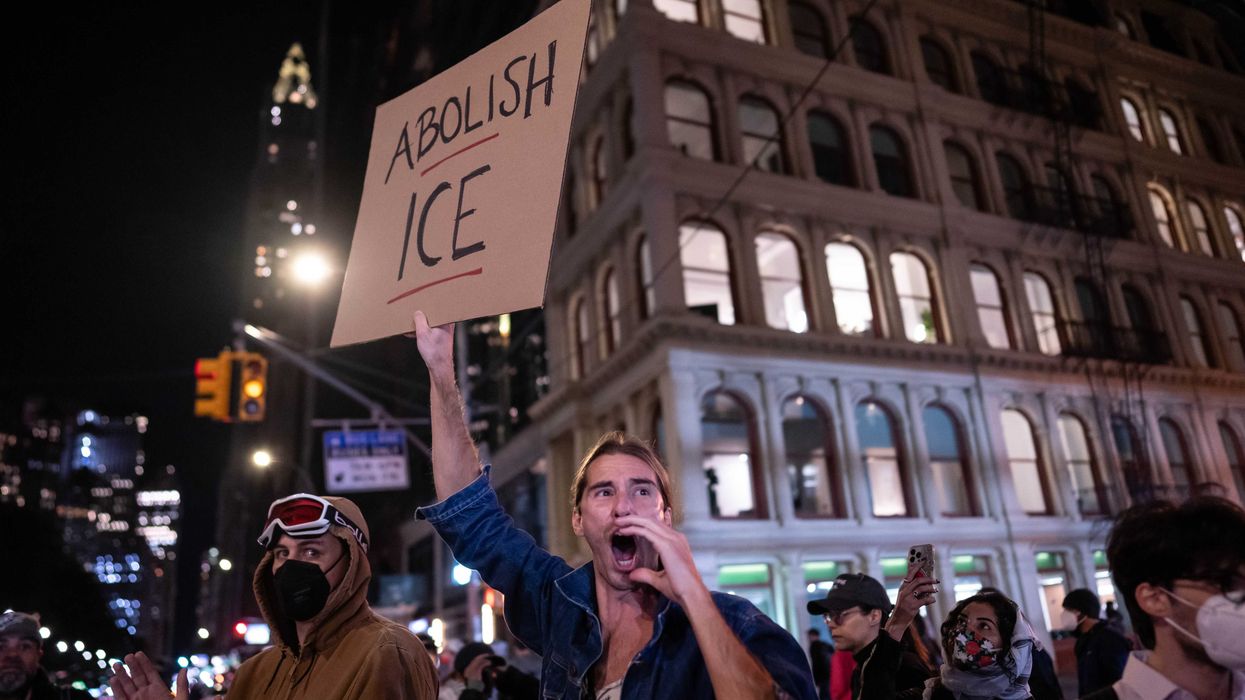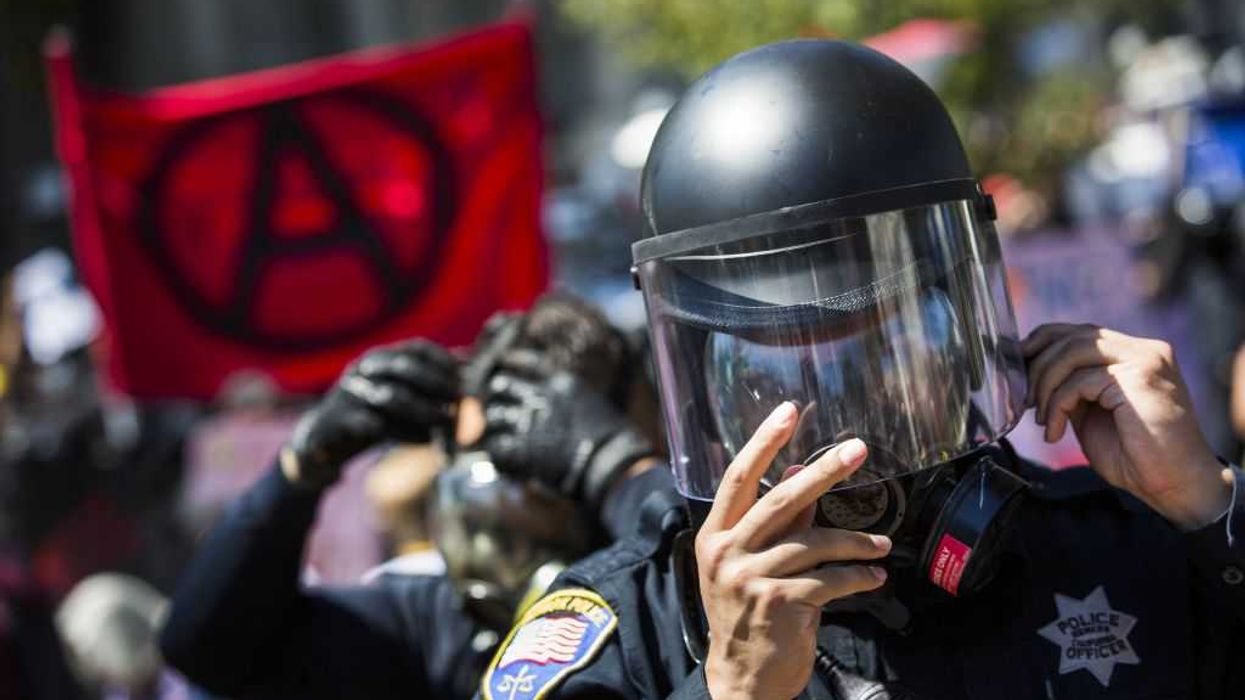GLENN: So you're 21 years old, and you think you're invincible. I remember being 21 years old and thinking, "Never going to die." Now every day you get up, and you're like, "It could be today."
You're young. You're healthy. You have your whole life in front of you. And that is what Katie thought. She had no idea that anything was wrong with her, until she went in for a routine ultrasound with her second child Willow. And during the ultrasound, it was discovered that Katie had cervical cancer. And the doctor said, "You have to abort your child. You're going to die. The child is going to die." She said, "I won't abort my child." She had to start treatment right away. And the answer was, "No. I'm not going to kill my child."
She was determined to meet the angel that she says saved her life. If it hadn't been for Willow, she would have never known she had cancer. Katie carried Willow to term, and the doctors were able to remove the cancer. Katie was ecstatic. She was cancer-free and mom to a beautiful baby girl. And then trouble set in. Willow stopped eating a couple of months in. The little girl was rushed to the hospital. Stayed there for most of her first year. She dealt with pneumonia and heart failure and respiratory failure. It was one thing after the other. Weeks and weeks of testing. And finally she was diagnosed with a rare terminal condition called Inclusive-cell disease, which inhibits growth and breathing and heart function, digestion, everything. There are only 72 confirmed cases in the world.
And despite her ailments, Willow was finally released from the hospital just in time for her first birthday. And Katie was excited to finally have Willow home, where she could give her the support and love she needed most. While preparing for her birthday, Katie encountered another blow: She became the victim of domestic violence and found herself now a single mother of two young children. The reason why I'm telling you this story is because there is a remarkable person inside mom. Because Katie hasn't lost hope. She is now doing her best to provide for her son and Willow all on her own. And she says, "I am not going to let Willow down because Willow saved my life." And now she vows to save Willow's life. Katie joins us now. Hi, Katie, how are you?
KATIE: Hi, thank you. I'm good. And you?
GLENN: I'm good. This is a remarkable story.
KATIE: Thank you.
GLENN: How is -- how is Willow?
KATIE: Oh, she's doing great. She's still snoozing right now. She loves her sleep. And loves to sleep in. So...
GLENN: And she spent -- in her first year, she spent all, but 12 days in the hospital?
KATIE: From November 18th of 2016 -- or, sorry. January 16th to November 10th of 2016, all, but 12 days was spent between our tiny hospital back in Montana and Seattle children's hospital.
GLENN: So, Katie, what do you say to people who will make the case -- and I'm sure they've made it to you.
KATIE: Uh-huh.
GLENN: They'll make the case that, see, you would have been better off. She would have been better off had she never been born.
You know, I could imagine people even said, "God intended her -- you were supposed to do that. That's why she's suffering from all of this." Even though you didn't know.
KATIE: Yeah.
GLENN: How do you respond to that?
KATIE: We've gotten a lot of it and stuff. Especially with the articles going around. There's always those people who are like, "Oh, well, why bring a child into the world, knowing you have cancer, that your cancer is going to affect them, or knowing that something is wrong with your baby and so on and so forth?"
And I take it as an educational moment. Because, one, my cancer did not affect Willow in any way, shape, or form. Cervical cancer has no way to affect an unborn child. Also, cervical cancer cannot cause a genetic mutation, which is what Willow has. And with I-cell being so, so, so rare, obviously -- most people in the world are not aware of it, and most doctors do not even know of its existence -- there's no way to test for it in the womb, unless, say, I have another child. Now we know Willow's exact DNA mutation. We would be able to check to see if that child also has that exact DNA mutation. But when it's your first go-around with a child that you've never had, you know, you didn't have a previous I-cell child, you're kind of in the blind of all of it. Willow was extensively monitored. She was very healthy. She developed totally normal and stuff. So, I mean, people call me selfish for not aborting and stuff. And I'm like, calling me selfish would be calling every other woman in the world selfish because we all put our children at the same exact risk while they're in the womb. There's over 7,000 other rare diseases and stuff that most of them cannot be detected until well after your child is born.
GLENN: Had you known what Willow is going through now, would your answer have been different?
KATIE: I don't think so. I mean, I would never judge on somebody else's choice of whether they keep or abort their child and stuff. But for me, that's just -- it's not in the cards for me. I don't think I could bring myself to do that. I believe that every life out there has a very divine purpose. And stuff. And I believe that God gave me Willow exactly when he knew that I needed Willow, knowing the contents of my heart, that, you know, I would go through to see her life happen and stuff. Then I would be there when she needed me and stuff.
GLENN: And Willow is not expected to live possibly past ten?
KATIE: Yeah. Prognosis, medical prognosis at best is ten years old. There have been a few -- very few kiddoes with this that have made it shortly past ten. But the average span of these kids is three to five years. Because there's no treatment at all whatsoever because there's so little funding happening. There's no government or federal funding like there is for cancer researches and that kind of thing. That doesn't happen. All of the research funding comes directly from, you know, the few families that have been affected.
GLENN: I -- Katie, I will tell you that I'm from a family that has a long history of abuse. And I --
KATIE: Uh-huh.
GLENN: I commend you for getting out, especially in your situation, with two children. One of them is severely sick.
KATIE: Uh-huh.
GLENN: A lot of people will convince themselves that they either deserve it or it's the -- it's the pressure on him. Or, you know, whatever the excuse is.
KATIE: Uh-huh.
GLENN: How -- how difficult was the -- how difficult was it to make the decision, or was it strangely for you just obvious?
KATIE: Well, I mean, it was -- you're kind of in the situation for a while. Like, once Willow started getting sick, unfortunately, her father -- because of the way he grew up, the only way he knew how to cope was to have alcohol to drown out everything he needed to cope. So it was going on for a while. I repeatedly to try to find him help. Get him help and stuff. He would start seeing counselors. And it would get better. But then he would push off and fall back again. It's really true what they say when they say, you can't help somebody who doesn't want to be helped.
But after her terminal diagnosis, it really spiraled for a while. But after she came home, it seemed like things were getting better and stuff. Like, we got into a routine and everything.
I think probably -- he hadn't drank in a while even. But I think what spiked it was, you know, that -- it was Willow's birthday the next day, and even though every birthday just like for every family is a huge milestone, and like it's very exciting for us, it's also extremely, extremely bittersweet and stuff because we know we're not going to have very many of them. So I think that kind of got to him. And that's what stemmed his drinking afterwards that night. For when he came home. And, you know, I don't hold any bad blood for him because none of us know how we're going to cope with something like this. You know, none of us are going to say what's going to happen or how we're going to handle a situation like this, until we're all on the front line of it. And we all have different coping mechanisms. That doesn't mean that what he did was okay. That there's any excuse for it. But once things became physical and once things posed risks to my children and stuff -- again, my life is for my children, just like when I was pregnant with Willow. Like, I will not let anything in the pathway of harming them. So when it became --
GLENN: Go ahead.
KATIE: Yeah. When it became physical, it was -- you know, at that point and stuff -- like obviously police were called. And he was removed from the house.
GLENN: Easy.
KATIE: And since then, we haven't had contact with him.
GLENN: So when I saw your story online, Willow is dependent on 24/7 feeding tube. She's on heart and oxygen monitors. Medication from 6:00 to 10:00 p.m. BiPAP at night. Requires what is called deep suctioning, threading of suction catheter through her nose and the airway. This is so -- so harsh for you.
You -- you list all the things that you have to do. And now that you are -- you are out -- you can't go to a shelter because --
KATIE: No.
GLENN: -- you -- you can't -- you can't bring Willow into the shelter. She gets a cold, and she can die.
KATIE: Uh-huh. Yes.
GLENN: You've been accepted on a housing wait list. Which you said, "Could lift our biggest stressor from our shoulders." And the list is long. And we're close to the end and not likely to receive some help until at some point next year. We're just doing all we can for a roof over our heads. You had a goal of $5,000. And you were -- last I checked, you were at $2,900.
KATIE: Uh-huh.
GLENN: That doesn't seem like an awful lot of money to believe just to keep the roof over your head. It seems --
KATIE: It's not. Yeah, it's not the -- I'm one of those people, I have a very hard time asking for help as it is. And like, I don't really set my goals too big because I don't want to be disappointed. And I don't want to come off like I'm asking for a handout. You know, I'm asking the world of people. That's not the person I am. So...
GLENN: You're remarkable, Katie. You're remarkable.
KATIE: Thank you.
GLENN: And I applaud you for your strength. And expect miracles because they will happen. Thank you, Katie. God bless.
KATIE: Uh-huh.
GLENN: Wow can we change her life.
STU: Yeah. Really have a chance to do something for somebody. Katie Hanson and her daughter Willow Ray Porter. They're up on YouCaring.com. Actually, let me send it right now. Just posted on Twitter @worldofStu, if you want to donate and help. I mean, she only needs a couple thousand dollars. This audience can do that in like nine seconds.
GLENN: Let's change her life. Did you hear her, the way she spoke, I don't want to ask for help. I mean, holy cow, let's change her life. We just tweeted how you can help. Join us on that, will you?

 Harold M. Lambert / Contributor | Getty Images
Harold M. Lambert / Contributor | Getty Images
 Adam Gray / Stringer | Getty Images
Adam Gray / Stringer | Getty Images Anadolu / Contributor | Getty Images
Anadolu / Contributor | Getty Images Brandon Bell / Staff | Getty Images
Brandon Bell / Staff | Getty Images